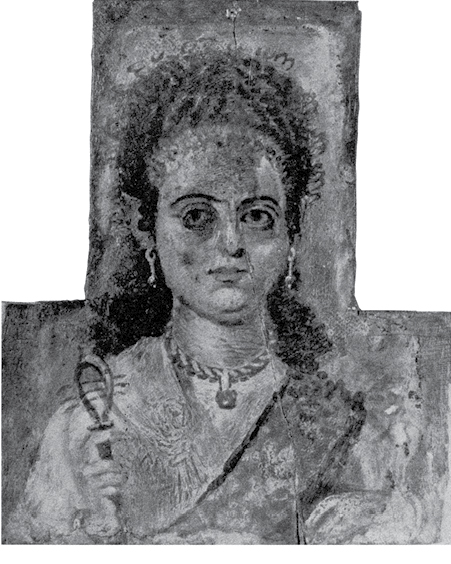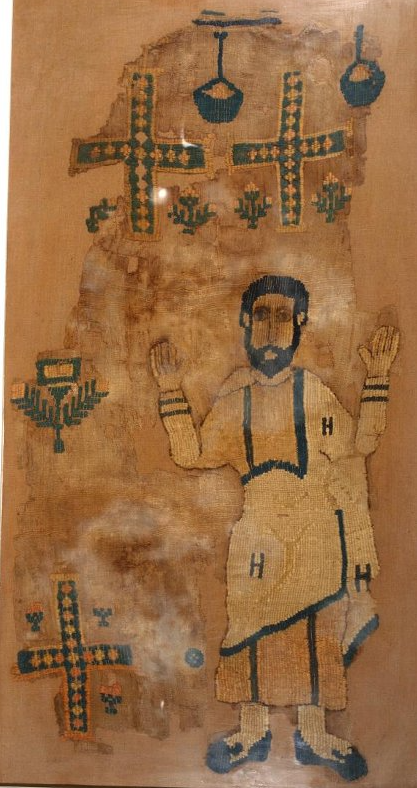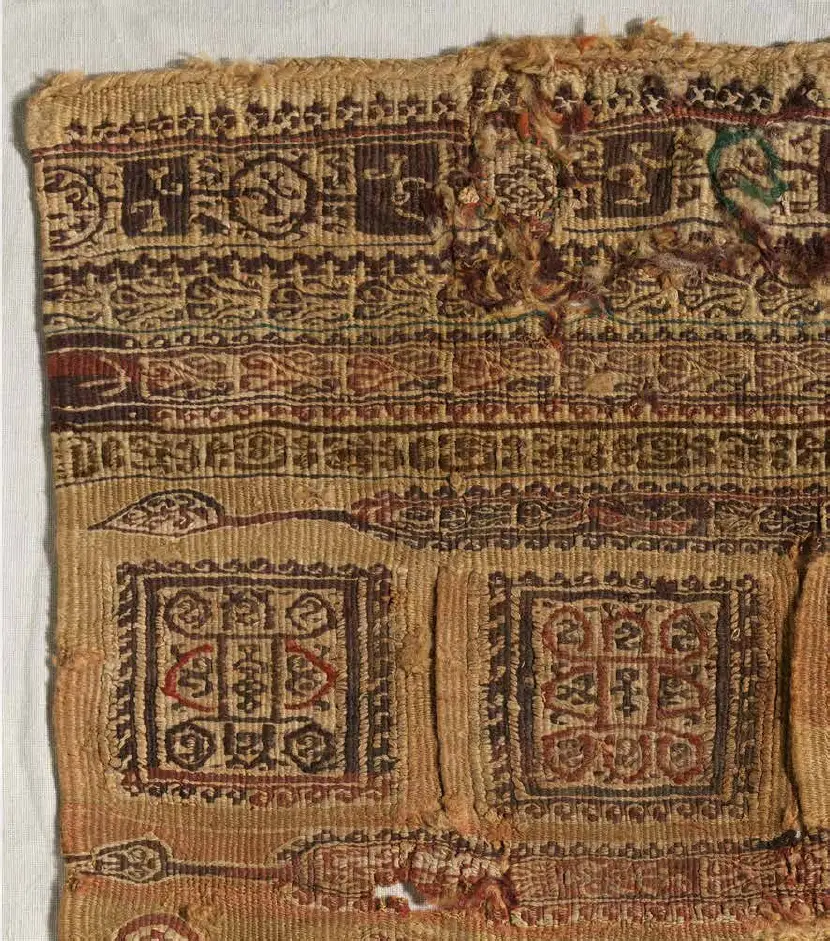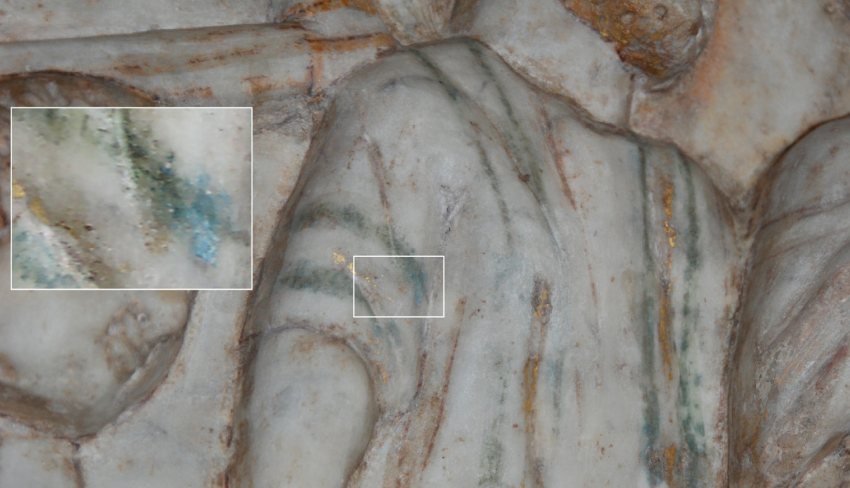

John Winder Flickr
Etruscan sarcophagus, Archaeological Museum, Florence
Traces of green and red polychrome, well visible patterns of textiles (pillows, mattress, himation), red band of a woman's peplos.
“The urn is decorated with two carved figures representing a lying man and a sitting woman. The man holds a patera with his left hand, and, with a gesture of great intimacy, his right arm is laying on the shoulders of his bride. The plastic effect is remarkable. Traces of the original polychrome.
This alabaster urn is named “Bottarone Urn” after the site of its discovery near Città della Pieve, Perugia. There are several scenes of symposium featuring married couples painted inside the Etruscan tombs, as well as cinerary urns with banqueting couple portrayed upon the lid. Presumably the Hellenistic literary tradition is referring to the introduction of women to the symposium when it makes polemical allusion to the liberty of the customs of Etruscans.”
Alabaster urn, 5th – 4th century BC
From Città della Pieve, Perugia; Florence, Museo Archeologico Etrusco
Source Egisto Sani from Flickr










